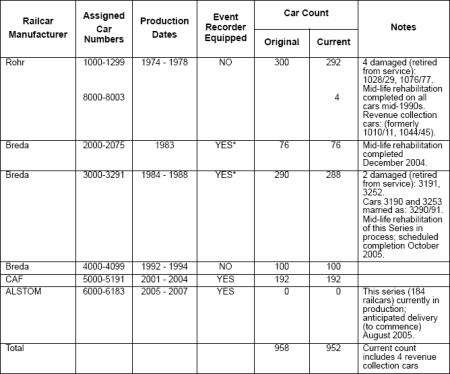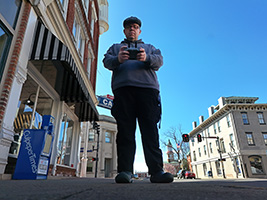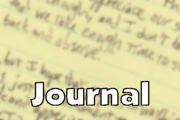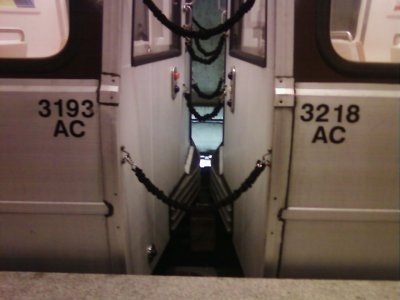So what’s the story here?
3 minute read
July 2, 2008, 11:45 PM
Looks like there’s more than just Breda 3290 and 3291 as a mismatched set in Metro’s 3000 series of rail cars. Look at this:
This is Breda 3193 paired with Breda 3218, which I rode from Metro Center to Glenmont this evening. I had previously spotted this odd pair of rehabs last week in Brentwood Yard while on my way to work, but kind of half-dismissed it, thinking that it wasn’t a mismatched pair, since I had to have been looking at two cab ends next to each other, but this photo proves my suspicions. 3193 and 3218 are a pair, as these are the blind ends pictured here.
Normally, you see, Metro car married pairs are numbered sequentially, with the even number as the lower of the pair. Thus if I’m on Breda 2008, for instance, I know that Breda 2009 is permanently attached to it on the non-cab end. Anything else would be non-standard.
And the reason this is so puzzling is because all the equipment that is supposed to be mismatched is accounted for. The NTSB report on the 2004 Woodley Park-Zoo accident accounts for every rail car up to that time that is no longer in revenue service:

Source: NTSB
This accounts for the 1982 Federal Triangle derailment, which took 1028-1029 out of revenue service. 1028 later became the feeler car, which is currently sitting at Brentwood. This accounts for the 1996 Shady Grove collision, which took 3190-3191 and 3252-3253 out of revenue service. 3191 and 3252 actually collided with each other and were retired, while 3190 and 3253 became 3290-3291 and returned to revenue service. Then 1076-1077 was pulled from revenue service following 1077’s destruction at Woodley Park-Zoo in 2004. 4018-4019, the pair that was hit, was quickly repaired and returned to revenue service. I had 4019 this past May 6, in fact, on the way home from work. Then the 2007 Mt. Vernon Square derailment, not listed on this chart, involved CAF cars, specifically 5152-5153.
So that’s what we definitely know regarding out-of-service cars and cars without mates. One of the numbers comes close, but not quite, as 3193 is the odd-numbered car in the set. 3191 was one of the accident cars in 1996 – not 3193. So we can toss out the idea of repairing ten-year-old accident damage during rehab. Likewise I can toss out the theory that 3290-3291 went to rehab and came back with their original numbers. Then 3218 doesn’t even come close to coinciding with anything I’ve got.
Then my transit log shows that since I started logging in August 2005, I rode 3193 on August 31 and November 16, 2005 in its original configuration. I have no records at all of riding 3192. Then my records show that I rode 3218 on April 8 and October 23, 2006 in original configuration, and on June 26, 2007 post-rehab. And I have no records of having ridden 3219.
So with all the information I have in my collection of train-geek type documentation on my computer, I’ve got nothing. So the question consists of multiple parts. First of all, why are Bredas 3193 and 3218 paired together? When did this unusual pairing happen? And lastly, what happened to Bredas 3192 and 3219, and when? That’s really strange, and I don’t have an answer. And I want one, too…
Web site: Photo of a WMATA Rohr train from the 70s. Note the interior roll signs.
Song: Lurleen Lumpkin's "Bagged Me a Homer" song from The Simpsons.
Quote: Yeah, if you know why this pair is so brazenly mismatched, let me know. That's just odd...
Categories: WMATA











According to my journal, I was on #3218 this past August 1st when I was visiting DC to ride the new Silver Line. While this particular car was not the one for the new extension, it was the first on an Ag Line train. I was going to spend an afternoon at Six Flags, so this was the first train that came (I could have also gone on the bleu line, lol) at Federal Center Southwest. It took 23 minutes and two seconds to travel to Largo Town Center where I caught the C22 bus. However, I did not notice this odd feature. I was in 3218 simply because it was the last on the 8-car train, which I boarded on purpose simply to look out the back window, even though the nook was closed so I had a partly obstructed view. Still an enjoyable ride, especially the outdoor section after Stadium-Armory until the junction where the Blue/Silver returns into a tunnel, and the “breezeway” covered by the arch screen shortly before Morgan Blvd. During the entire trip, the alphanumeric interior screens were stuck on “Silver,” failing to display station names and doors. As we crossed over to track G2 at LTC, the motorman said that it “concludes this Blue Line trip” before correcting the color, as it had been around for less than a week. On the return trip, I got on the Metro from Addison Road, and noticed the platform pylons didn’t have the Silver Line, still with the striped orange symbol.
Regarding your not seeing the mismatched car numbering, I observed on May 30, 2009 that 3218 was back with 3219, its correct mate. I also find it interesting the way Metro regularly moves railcars around the system. You got 3218 on Silver Line service (and I have no idea what yard Silver Line service is run from) back in August, and then I got 3219 on the Red Line on November 3.
Otherwise, regarding the SIlver Line operator’s announcing “Blue Line”, the operator of the inaugural Silver Line train did that one time somewhere downtown as well. Understandable mistake, since Largo Town Center had been a Blue-exclusive station for almost a decade(!) now, and Silver Line was brand new.
Interesting. Given the station (and former terminus), I used to associate the name “Addison” with the color blue, possibly because a station also exists on the CTA Blue Line, albeit also the Red and Brown.